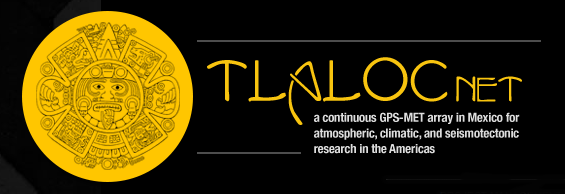TLALOCNet

UNAVCO was funded through an NSF Major Research Instrumentation (MRI) Program grant to support the development of a continuous, real-time, low latency GPS network and collocated meteorological sensing package (temperature, barometric pressure, relative humidity, surface wind speed) array in Mexico for atmospheric, climatic, and seismotectonic research in the Americas, named the Trans-boundary, Land and Atmosphere Long-term Observational and Collaborative Network (TLALOCNet, after the Aztec God of rain fertility and water). TLALOCNet entailed the construction of six new GPS/Met stations located in the Sierra Madre Occidental of northern Mexico, islands in the Pacific off central Mexico and two sites on island in the Bay of Campeche, Gulf of Mexico. An additional 18 existing cGPS sites along the western Coastal and interior regions of central Mexico proximal to the Mexico subduction zone were upgraded with modern GPS receivers and choke ring antennas, upgraded power and telecommunication systems, meteorological sensors, and enclosures to bring the full network to the standards of the other tectonic geodesy GPS networks (e.g., EarthScope - Plate Boundary Observatory).
TLALOCNet data is openly and freely available and discoverable via UNAVCO web services. TLALOCNet data has the potential to transformably advance understanding of atmospheric dynamics in a region that is impacted seasonally and annually with large fluxes of atmospheric moisture from the Pacific, the Gulf of Mexico and the Caribbean. GPS/Met enables the derivation of total precipitable water (TPW) in the Earth's atmosphere in a cone above GPS/Met stations by using the delay time of multiple frequency GPS satellite signals that are influenced by the integrated amount of atmospheric moisture from the top of the atmosphere to the receiver antenna. GPS-Met observations of TPW complement other measurements of the vertical and horizontal spatial and temporal distribution of water vapor in the atmosphere through satellite remote sensing methods and weather balloon launched radiosonde meteorological sensors.
UNAVCO funding for TLALOCNet ran from September 2013 to August 2017.
TLALOCNet data are archived at UNAVCO and can be accessed via the GPS/GNSS Data Archive Interface:
Last modified: 2019-12-24 02:12:51 America/Denver

